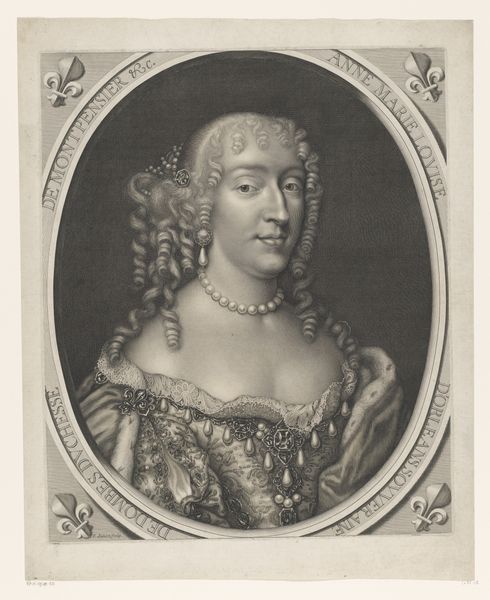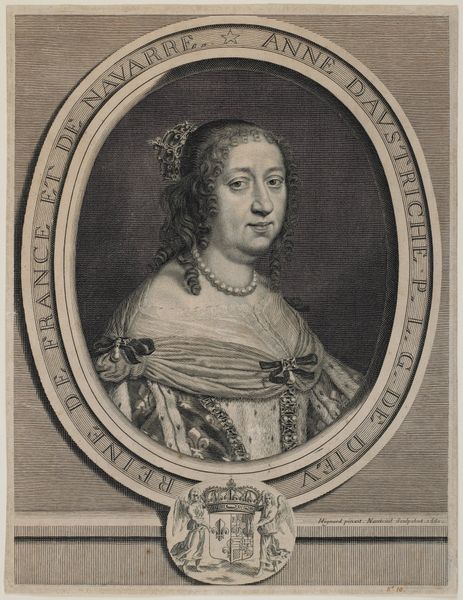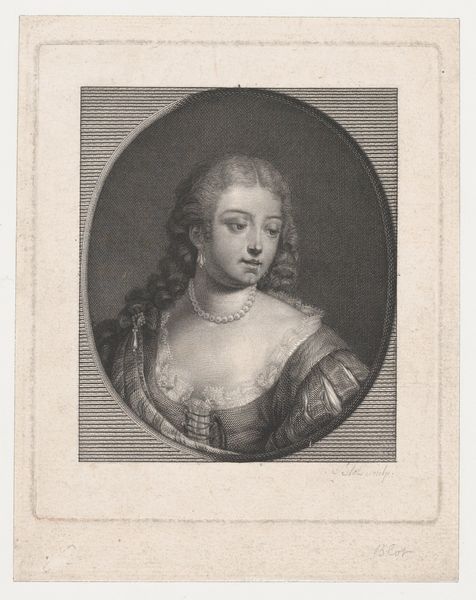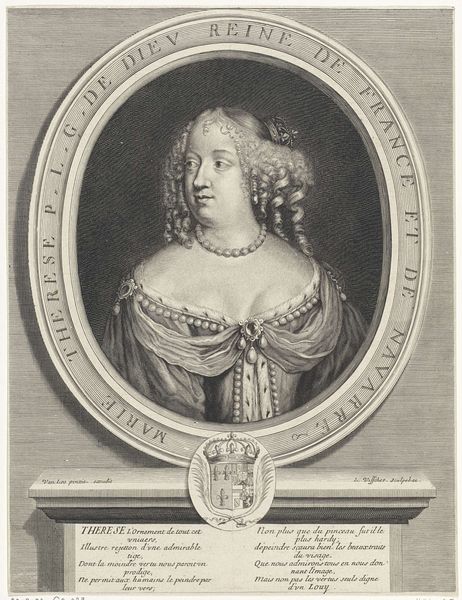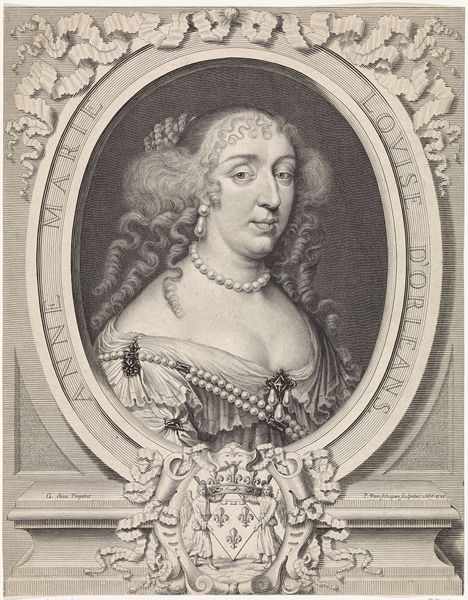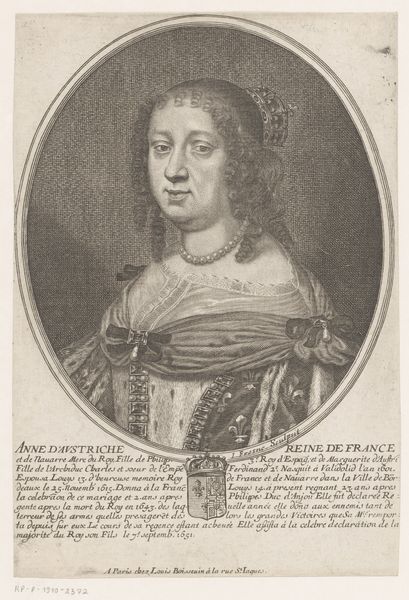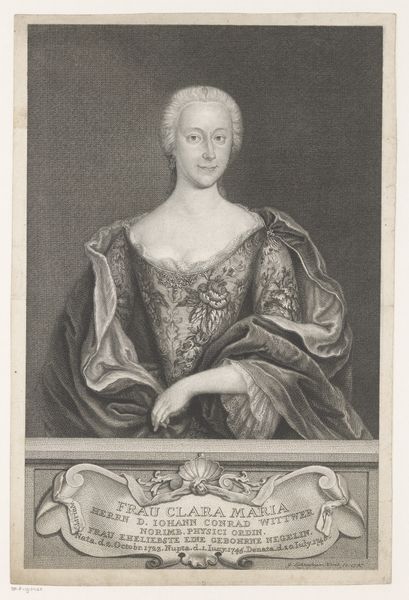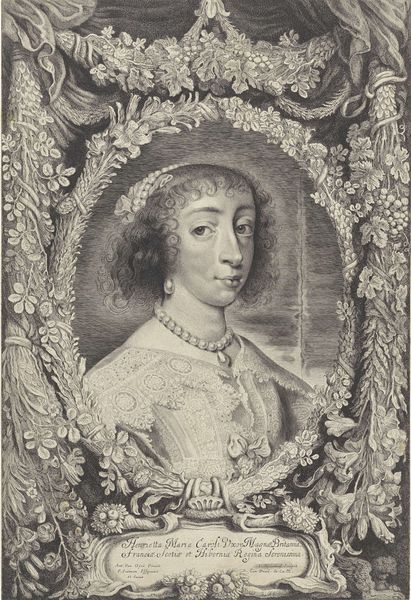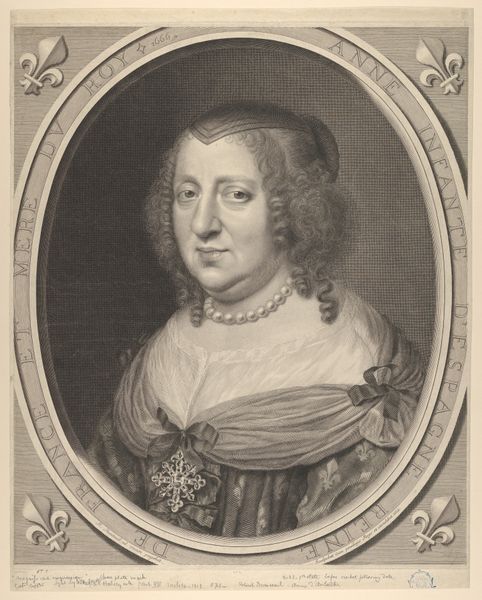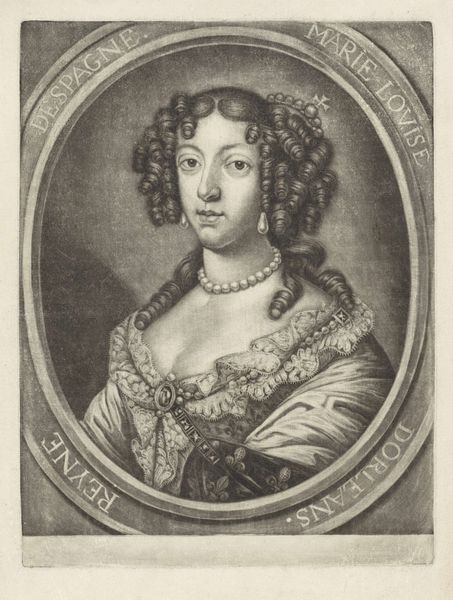
print, engraving
#
portrait
#
baroque
# print
#
figuration
#
historical photography
#
history-painting
#
academic-art
#
engraving
Dimensions: height 489 mm, width 427 mm
Copyright: Rijks Museum: Open Domain
Antoine Masson created this portrait of Anne of Austria using engraving techniques sometime between 1664 and 1700. As a print, this image embodies how portraiture functioned in Early Modern Europe. It was not only a tool for memorializing individuals but also a means of circulating power and status. Made in France, this image’s visual codes are deeply rooted in the social structures of the time. The fleur-de-lis, repeated in the corners, is a well-known emblem of French royalty. The inscription around Anne identifies her as Queen by the Grace of God, emphasizing the divine right of monarchs. Her elaborate dress, complete with pearls and jewels, further reinforces her high social standing. Such prints played a significant role in shaping public perception of the monarchy. By controlling the distribution of these images, the royal court could carefully craft its public image. Understanding the institutional context in which this print was made allows us to appreciate its role in the theatre of power. Historians can consult period documents to fully reveal the complex relationship between art and authority.
Comments
No comments
Be the first to comment and join the conversation on the ultimate creative platform.


